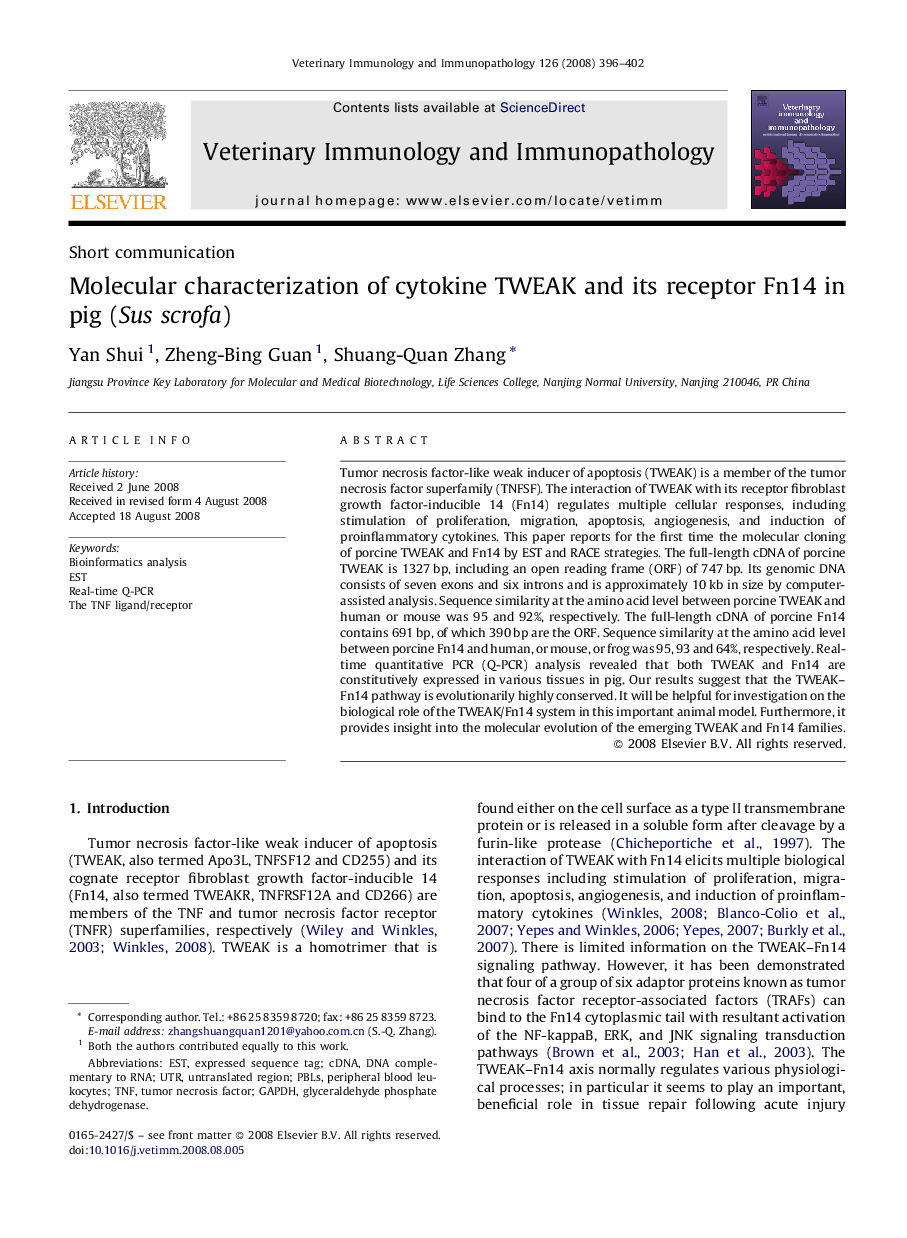| کد مقاله | کد نشریه | سال انتشار | مقاله انگلیسی | نسخه تمام متن |
|---|---|---|---|---|
| 2462977 | 1555093 | 2008 | 7 صفحه PDF | دانلود رایگان |

Tumor necrosis factor-like weak inducer of apoptosis (TWEAK) is a member of the tumor necrosis factor superfamily (TNFSF). The interaction of TWEAK with its receptor fibroblast growth factor-inducible 14 (Fn14) regulates multiple cellular responses, including stimulation of proliferation, migration, apoptosis, angiogenesis, and induction of proinflammatory cytokines. This paper reports for the first time the molecular cloning of porcine TWEAK and Fn14 by EST and RACE strategies. The full-length cDNA of porcine TWEAK is 1327 bp, including an open reading frame (ORF) of 747 bp. Its genomic DNA consists of seven exons and six introns and is approximately 10 kb in size by computer-assisted analysis. Sequence similarity at the amino acid level between porcine TWEAK and human or mouse was 95 and 92%, respectively. The full-length cDNA of porcine Fn14 contains 691 bp, of which 390 bp are the ORF. Sequence similarity at the amino acid level between porcine Fn14 and human, or mouse, or frog was 95, 93 and 64%, respectively. Real-time quantitative PCR (Q-PCR) analysis revealed that both TWEAK and Fn14 are constitutively expressed in various tissues in pig. Our results suggest that the TWEAK–Fn14 pathway is evolutionarily highly conserved. It will be helpful for investigation on the biological role of the TWEAK/Fn14 system in this important animal model. Furthermore, it provides insight into the molecular evolution of the emerging TWEAK and Fn14 families.
Journal: Veterinary Immunology and Immunopathology - Volume 126, Issues 3–4, 15 December 2008, Pages 396–402